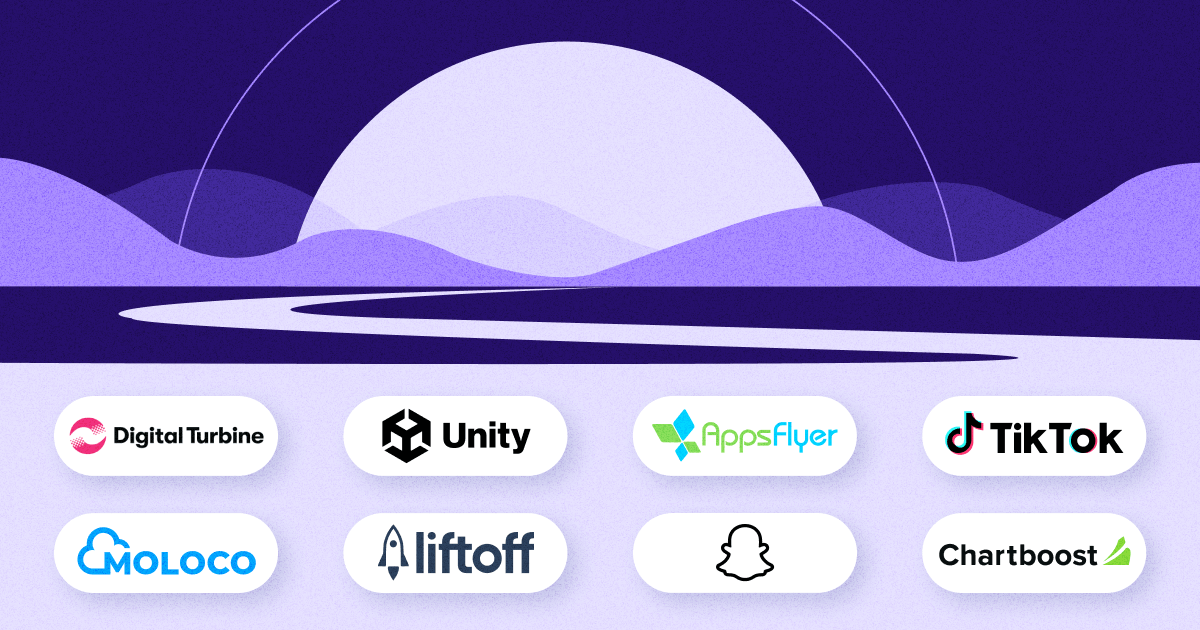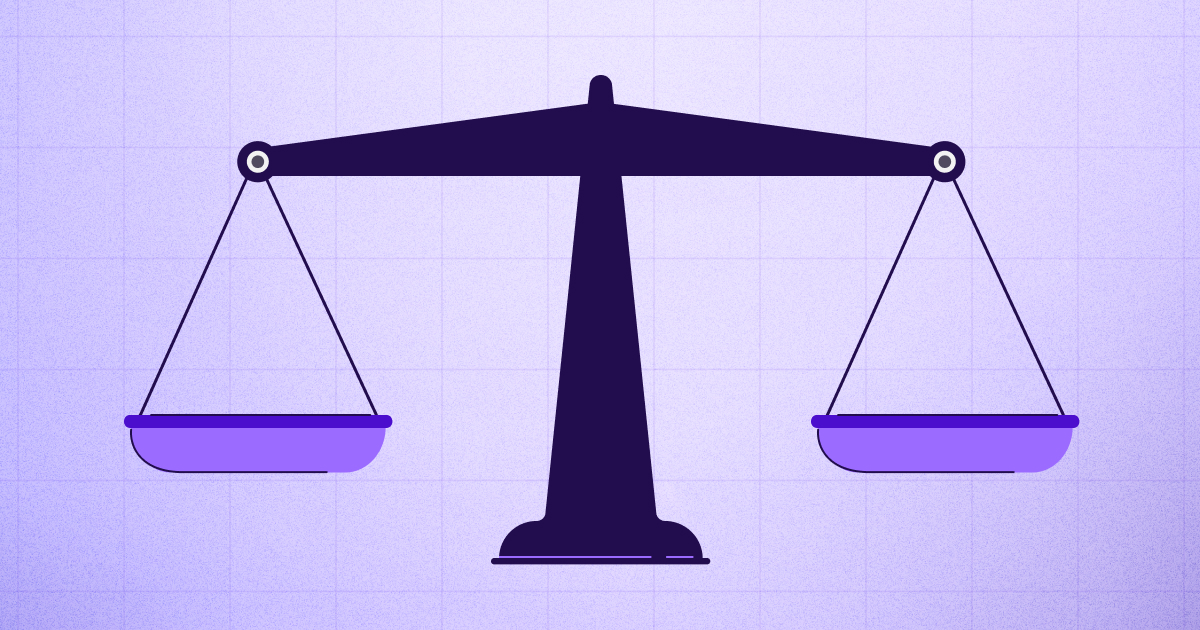
eCPM (Effective cost per mille)
eCPM, or effective cost per mille, is the revenue earned by a publisher (an app owner) for every 1000 ad impressions displayed on their app. Publishers use this metric to measure campaign performance and drive maximum value from their ad space.
What is eCPM (and how is it different from CPM)?
eCPM stands for effective cost per mille (thousand), and is a metric used by app owners — known as “publishers” in the app marketing ecosystem. Confusingly, although eCPM includes the word “cost”, it actually measures revenue.
In the in-app advertising model, advertisers pay publishers to display their ads. Often, this is done on a “per mille” basis, meaning advertisers pay a set price for 1000 impressions (views) of their ad.
eCPM is what publishers earn from these impressions. It combines all the revenue they gain from the multiple advertisers using their inventory.
Publishers use eCPM to assess how well ads are performing. This works on two levels: monetization and user acquisition (UA).
- On the monetization side, publishers use eCPM to assess the earning power of their ad real estate. A high eCPM shows the ads they’re serving are performing well and converting users. That makes the ad placement more competitive, so publishers can charge more for it.
- On the UA side, eCPM measures the ad revenue generated by a specific campaign. Ad networks use eCPM to rank campaigns when they’re serving ads: campaigns that achieve high eCPMs are served more prominently and frequently, enabling these campaigns to increase their impressions and scale quickly.
eCPM vs CPM
eCPM is often confused with CPM, or cost per mille. They’re actually two sides of the same coin: while eCPM is used by publishers to track their revenue, CPM is used by advertisers to control their spend.
CPM is the predefined cost that advertisers pay for every 1000 impressions of their ad, enabling them to allocate budgets and optimize campaigns.
eCPM, on the other hand, is a dynamic calculation that’s affected by the forces of supply and demand.
For example, imagine you have two spots on your app that can each generate 100,000 ad impressions. However, Spot A typically achieves a higher click-through rate than Spot B. This makes Spot A more competitive: advertisers will pay a CPM of $3 to feature here, compared with only $2 for Spot B. Your eCPM would show the total revenue you achieve based on each advertiser’s CPM.
Which brings us neatly on to…
How to calculate eCPM?
eCPM can be calculated using the following formula:
(Total earnings / Total number of impressions) x 1000 = eCPM
Let’s say your app earns a total of $700 a day from ads, and you’ve served 200,000 ad impressions. Your eCPM would be calculated as follows:
($700 / 200,000) x 1,000 = $3.5 eCPM
In other words, for every 1,000 impressions, you as a publisher generate $3.5 in revenue.
Benefits of eCPM
For app publishers, eCPM is important when it comes to generating maximum value from their advertising space. Let’s take a closer look at the benefits of this metric.
Monetize your impressions effectively
Knowing which impressions generate the most revenue is crucial. It means you can achieve maximum value from those top spots, but also investigate why others might be underperforming. Are they poorly placed, or on overlooked pages? Aim to optimize your design so that every impression counts.
Identify the highest-value advertisers
When your ad space performs well for advertisers, they’ll likely use it again — and be willing to pay for the privilege. And if they have engaging ads that resonate with your audience, there’s a good chance of success. You may even decide to negotiate with your best advertisers directly, cutting out the ad exchange in the middle.
Evaluate the impact of changes in your app
Changing up your app’s content or design sounds great, but make sure it’s not at the expense of your ad revenues. If you change something and your eCPM goes up, it means users are responding better to the ads you’re serving. If it goes down, they’re engaging less — and your new-look app could be to blame.
Test different ad formats
Comparing your eCPM lets you trial different types of ads — for example, does a video yield better results than a static banner? Understanding which formats work best helps you attract the right advertisers at the right price.
Predict revenue
Knowing your current eCPM, and being able to compare it across months or years, gives you a good foundation to predict and optimize revenue over time, helping you plan and budget effectively.
eCPM benefits for advertisers
Although eCPM is of most interest to publishers, it has some benefits for advertisers too: it helps them see the value of an impression, and the effectiveness of a campaign.
If you’re an advertiser, you might decide it’s worth paying higher CPMs for the most competitive placements. That’s because those ads generate higher eCPMs and will be prioritized by ad networks. Therefore, they’ll get greater visibility and enjoy continued success.

eCPM floor
In programmatic advertising, advertisers bid on available inventory. To protect their revenues, publishers can set an eCPM floor (also called a flat eCPM or predefined CPM), which is the minimum CPM bid an advertiser or ad network must meet to have their ad displayed.
Usually, the winning bidder pays $0.01 more than the second-highest bidder.
But here lies a catch. The pricing floor only comes into effect if the winning bidder is above it. In other words, if none of the bids meet the minimum set by the publisher, the ad won’t be served, and revenue will be lost.
eCPM floors can be defined for geographical regions, device types, advertisers, ad types (such as rewarded video, banner, or interstitial), or even for individual ads. It’s crucial to keep monitoring them, as getting the floor price wrong can result in lost revenue. One way around this is to set a floor price for one network, and a lower floor price for another. That way, you have a fallback option if neither wins the bid.But could eCPM floors be on the way out? As the mobile app market moves from a hybrid bidding system towards a pure in-app bidding monetization, it’s likely that eCPM floors will become less relevant.

What is a good eCPM?
As is often the case in marketing, what “good” looks like will differ for every business and campaign. What’s more, there are various factors that can influence eCPM — not all of them within your control.
- Geography – eCPMs tend to be higher in developed markets like the US and Europe, compared to regions where costs are lower.
- Seasonal factors – advertisers typically buy more impressions at peak sales periods like Christmas or Black Friday.
- Ad placement and format – ads placed higher up the page (“above the fold”) generally achieve more impressions and therefore command a higher eCPM. Similarly, video or interactive ads tend to have higher conversion rates, again boosting eCPM.
- Loading speed – apps and web pages that load fast get more impressions. If yours is running slow, you could be losing users and missing out on eCPM.
- Audience – the more engaged your user base, the more often they’ll return to your app and the more you can charge for advertising. Apps with a niche audience tend to report high engagement, and this also enables you to identify ads that will resonate with their specific interests.
By taking these factors into account, and comparing your eCPMs over time, you can get a feel for how you’re doing now and what you can realistically aspire to.
How to increase your eCPM: best practices
So, when it comes to eCPM, bigger is better. Now you know some of the factors that can influence this metric, let’s look at some options for increasing your eCPM.
Use multiple ad networks
Don’t put all your eggs in one basket. By working with several different ad networks, you can fill your inventory faster and command more competitive rates, particularly if you choose networks that specialize in your niche or geographical area.
Increase visibility
Getting more eyes on your ads is the key to boosting your eCPM. The most obvious way to do that is to increase app usage. Be sure to optimize your app store listings and make your app sticky enough to keep users coming back. Then, identify your most effective ad placements to optimize your layout. You can even experiment with sticky ads which move as users scroll, keeping those eyeballs locked.
Choose the most effective ad formats
Test the performance of different formats to see what converts best — and do more of it. You can experiment with different sizes and layouts, and compare different ad types such as video, banners, or interactive content.
Make in-app bidding work for you
In-app bidding is a technique used in programmatic advertising, where app publishers auction inventory to multiple ad exchanges simultaneously and sell it to the highest bidder. (The equivalent for websites is known as header bidding.) This way, you attract the advertisers that pay the biggest CPMs – and your eCPM goes up.
Key takeaways
- eCPM stands for effective cost per mille. It’s a metric used by app publishers to show how much revenue they achieved across all their ad impressions.
- To calculate eCPM, take your total earnings, divide it by your total number of impressions, and multiply by 1000.
- A higher eCPM means ads are effective at engaging users and driving conversions – so publishers can charge more for the space. In addition, ad networks favor ads that result in high eCPMs, enabling them to scale fast.
- While eCPM mainly applies to publishers, CPM (cost per mille) is a metric used by advertisers: it’s the price they’re willing to pay for each impression of their ad.
- Tracking your eCPM can help you monetize your impressions, attract high-value advertisers, and predict revenue. It’s also beneficial for testing ad formats and assessing app changes.
- Publishers can set an eCPM floor, which is the minimum bid they’ll accept from advertisers.
- When assessing your eCPM and setting goals, remember to consider factors like geography, seasonality, ad placement and format, audience, and loading speed.
- To improve your eCPM, you should work with multiple ad networks to maximize fill rates, and try in-app bidding to win the highest-paying advertisers. Also, work to increase app usage for more impressions, and identify the best-converting ad placements and formats.




